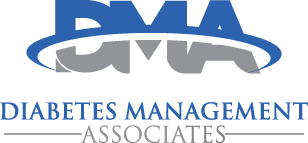The most recent Industrial Revolution in the United States was in 1969. There were many impacts for this country, all were not positive. The standard of living, education and production of goods went up. So did our chemical exposure.
There are more than 85,000 chemicals registered with the Environmental Protection Agency (EPA) that fall under the Toxic Substances Control Act. Each year another 2,000 chemicals are added to the list. Many have never been studied for safety by any government agency.
The Frank R. Lautenberg Chemical Safety for the 21st Century Act was signed into law by President Obama in 2016. This marks the first overhaul in EPA regulations in 40 years. Some of the changes include that the EPA must review new chemicals or significant new uses of existing chemicals, make a determination and take required risk management control action. The testing of chemicals on animals is to be reduced or replaced ‘to the extent practicable and when scientifically justified’.
But don’t get your confidence up just yet. Scott Faber, vice president of government affairs and the Environmental Working Group, said that EPA doesn’t have enough money to review even the most dangerous chemicals on the list. ‘It will take EPA decades to get through the thousands of most dangerous chemicals that EPA itself has said need urgent review.’
CHEMICAL EXPOSURE
We are exposed to many synthetic chemicals every day. They are used in food production, cosmetics, prescription drugs, household cleaners, lawn care, agriculture and so on. They are in our takeout containers, children’s toys, furniture and clothing. There is BPA in our receipts we touch every time we go shopping.
Just one example, 1,4-Dioxane is a ‘likely human carcinogen’ according to the EPA and is found in dyes, deodorants, shampoos and cosmetics as well as some food supplements. The list goes on and on. Don’t expect the EPA or any other organization to remove this or other ‘likely’ cancer causing chemicals from the market or warn us of the harm. The burden is on us as consumers to educate ourselves.
LOWERING RISK OF EXPOSURE
Lowering our toxic load, lowers risk of cancer, obesity, heart disease, diabetes and more. So how do you do this?
- Buy organic foods, raise your own gardens or stock up at farmer’s markets.
- Use natural sources for cleaning and clothes washing.
- A good quality water filter will remove tons of unwanted chemicals.
- Avoid plastic containers in the microwave. Instead use glass or paper.
- Avoid nonstick pans. That stuff that flakes off is known to cause cancer. Choose stainless steel, cast iron or enameled instead.
- Choose organic deodorants and cosmetics.
- Read food labels. If you don’t know what an ingredient is or can’t pronounce it, then don’t put it in your body.
- Highly processed foods contain many chemicals. Make popcorn the old-fashioned way instead of microwave bags full of chemicals.
- Avoid or at least lower artificial sweeteners.
With any lifestyle change, you have to start somewhere. Make small, frequent improvements, enjoy the results.
Live Long, Live Healthy!
Dr. Julie Wood is a Nurse Practitioner and has been serving the Middle Tennessee area for more than 30 years, specializing in adults with obesity, prediabetes and diabetes. Office is located at 401 First Avenue, Mt. Pleasant, TN and statewide with telehealth. Dr. Wood can be reached at 931-325-5560, www.diabetesmgtassociates.com, info@diabetesmgtassociates.com.
Articles are meant to be informative and should never replace the advice of your health care provider.
2/19/22
